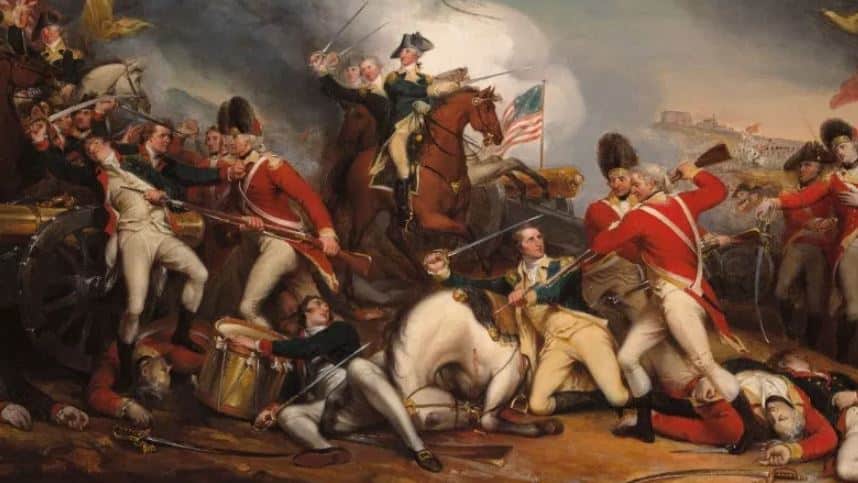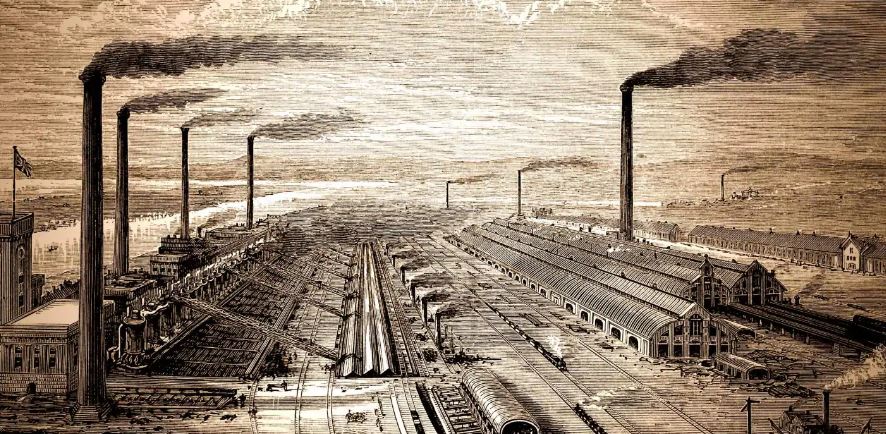Table of Contents
American Revolution, 1776: Goals and Outcomes | UPSC – IAS
The American Revolution was a colonial revolt that took place between 1765 and 1783. The American Patriots in the Thirteen Colonies won independence from Great Britain, becoming the United States of America. They defeated the British in the American Revolutionary War in alliance with France and others
As British settlers began to colonize – North America, Australia, and South Africa in the seventeenth and eighteenth centuries, they assumed that they shared in the political and legal rights of all Britons.
- By the 1760s, however, North American settlers were beginning to resent British control over their political and economic life. Control over American trade, restrictions on the development of American shipping, and the resulting limits on the development of certain kinds of manufacture, were as galling as the issue of taxation.
- The British victory of 1763 over the French in the Seven Years War in North America, concluding a global cluster of wars between the two powers, ended the threat of attack by French or Native Americans, and freed the American colonists from further need of British troops. However, the British continued to maintain a large army in North America and to tax the colonies directly to pay for it.
The Stamp Act of 1765 levied taxes on a long list of commercial and legal documents. The colonists protested with:-
- Riots,
- Destruction of government property, and
- A boycott of British goods until Parliament repealed the Act.
Further imperious decrees of King George III stoked increasing anger until, finally, the Americans revolted, declaring themselves an independent country in 1776 and fighting a war to end British rule over them. The American Declaration of Independence set out their list of “injuries and usurpations.”
It reflected the American resolve to secure the same legal rights as Britons had won at home almost a century earlier. It charged the king with “taking away our Charters, abolishing our most valuable Laws, and altering fundamentally the Forms of our Governments.” It blamed the king for abrogating the social contract that bound the colonies to Britain. It declared, ultimately, the right of revolution.
The American Revolution went further in establishing political democracy than had the Glorious Revolution in Britain. It abolished the monarchy entirely, replacing it with an elected government. Having declared that “all men are created equal,” with unalienable rights not only to life and liberty, but also to the vague but seductive “pursuit of happiness,” the revolutionaries now set out to consolidate their commitments in a new legal structure.
- Their leaders, such men as George Washington, Benjamin Franklin, Thomas Jefferson, and James Madison, were soldiers, entrepreneurs, and statesmen of considerable erudition, common sense, restraint, and balance.
The constitution and the Bill of Rights, 1789 | UPSC – IAS
After the Americans won their war for independence, 1775–81, and achieved a peace treaty with Britain in 1783, political leaders of the 13 colonies met in Philadelphia to establish a framework for their new nation.
They drafted a new Constitution, which took effect in 1789, and a Bill of Rights, which was ratified in 1791. The American Bill of Rights, the first ten amendments to the Constitution, guaranteed to Americans not only the basic rights enjoyed by the British at the time, but more:
- Freedom of religion (and the separation of Church and state), press, assembly, and petition;
- The right to bear arms;
- Protection against unreasonable searches and against cruel and unusual punishment; and
- The right to a speedy and proper trial by a jury of peers.
The Americans established a federal system of government. The states individually set the rules for voting, and many, but not all, removed the property requirements. By 1800, Vermont had instituted universal manhood suffrage, and South Carolina, Pennsylvania, New Hampshire, and Delaware extended the vote to almost every adult white male taxpayer.
Historians of the early United States situate the more radical American approach to political liberty in at least four factors: religious, geographic, social, and philosophical.
- First, a disproportionate number of the settlers coming to America from Britain and Europe were religious dissenters, seeking spiritual independence outside the established churches of their countries. Their widespread, popular beliefs in the importance of individual liberties carried over from religion into politics.
- Second, the availability of apparently open land presented abundant individual opportunity to the new Americans (as they dispossessed Native Americans). Later, the historian Frederick Jackson Turner would formulate his “frontier thesis,” arguing that the relative freedom and openness of American life were based, psychologically as well as materially, on the presence of seemingly endless open frontier land.
- Third, landed and aristocratic privilege was absent, and the artisan classes were strong in the urban population. Finally, eighteenth-century political thought had generally grown more radical, especially among the philosophes in France. By the time the Americans wrote their Bill of Rights, the French Revolution was well under way.
The first Anti-imperial Revolution | UPSC – IAS
The American Revolution, in addition to securing British rights for Americans, was also, and perhaps more importantly, the first modern anti colonial revolution.
The trade and taxation policies imposed by Britain had pushed businessmen and artisans into opposition to British rule. Other nations, notably France, eager to embarrass Britain and to detach its most promising colonies, provided financial and military support, which helped the Americans to win their independence.
- One of the goals of the revolution was to open to settlement the North American continent west of the Appalachian Mountains. The British prohibition on this westward movement stood in their way, quite different from Spanish and Portuguese settlement policy in Latin America.
As the newly independent Americans migrated westward, annexing land as they went, they began to develop imperial interests of their own, expressed in the mystique of “manifest destiny.”
- This popular belief in America’s natural growth across the continent inspired the European Americans in their constant warfare against Native American Indians. It led Thomas Jefferson to acquire the huge Louisiana Purchase from France in 1803.
- Texans were encouraged to assert their independence from Mexico in 1836 and were then absorbed into the American Union in 1845. Warfare with Mexico in 1846–48 ended in victory for the United States and the annexation of the southwest.
- Other annexations of land in North America took place more peacefully, with negotiations with Britain for the Oregon country in 1844–46 and with Russia for the purchase of Alaska—“Russian America”—in 1867. Nevertheless, over the centuries America served as an inspiration to anti colonial forces.
Jawaharlal Nehru, leading India’s struggle for independence from Britain in the twentieth century, cited the American Revolution as a model for his own country: “This political change in America was important and destined to bear great results. The American colonies which became free then have grown today [1932] into the most powerful, the richest, and industrially the most advanced country in the world.” (Nehru, p. 355).
Negative effects of American Revolution | UPSC – IAS
The American Revolution, however, did not bring democracy to everyone. The greatest shortcoming was slavery. The system was finally ended only by the American Civil War (1861–65), the bloodiest in the history of the nation.
- Even afterward, racial discrimination characterized American law until the 1960s, and continues to mark American practice up to the present.
- The status of the Native American population actually worsened after the revolution, as settlers of European extraction headed west, first by wagon train and later by railroad.
- They slaughtered American Indians, pushed them out of the way, confined them to remote, semi-barren reservations, destroyed the buffalo herds on which their nomadic existence depended, and discouraged the preservation of their separate cultures and languages.
- For the indigenous peoples the effects of the revolution were exactly opposite to those of the settler-invaders: expansion became contraction, democracy became tyranny, prosperity became poverty, and liberty became confinement.
Conclusion | UPSC – IAS
The American Revolution went even further on the road to democracy than England’s Glorious Revolution. Declaring “all men are created equal,” the American revolutionaries abolished the monarchy and established an elected government “of, by, and for the people,” with basic rights that included freedom of religion, press, assembly, and petition; protection against cruel and unusual punishment; and the right to a speedy trial by a jury of one’s peers. The new nation’s Declaration of Independence inspired freedom-fighters all over the world. It did not, however, provide equal rights for women, and it left slavery in place – two issues that would continue to engage the Americans for decades, if not centuries.






